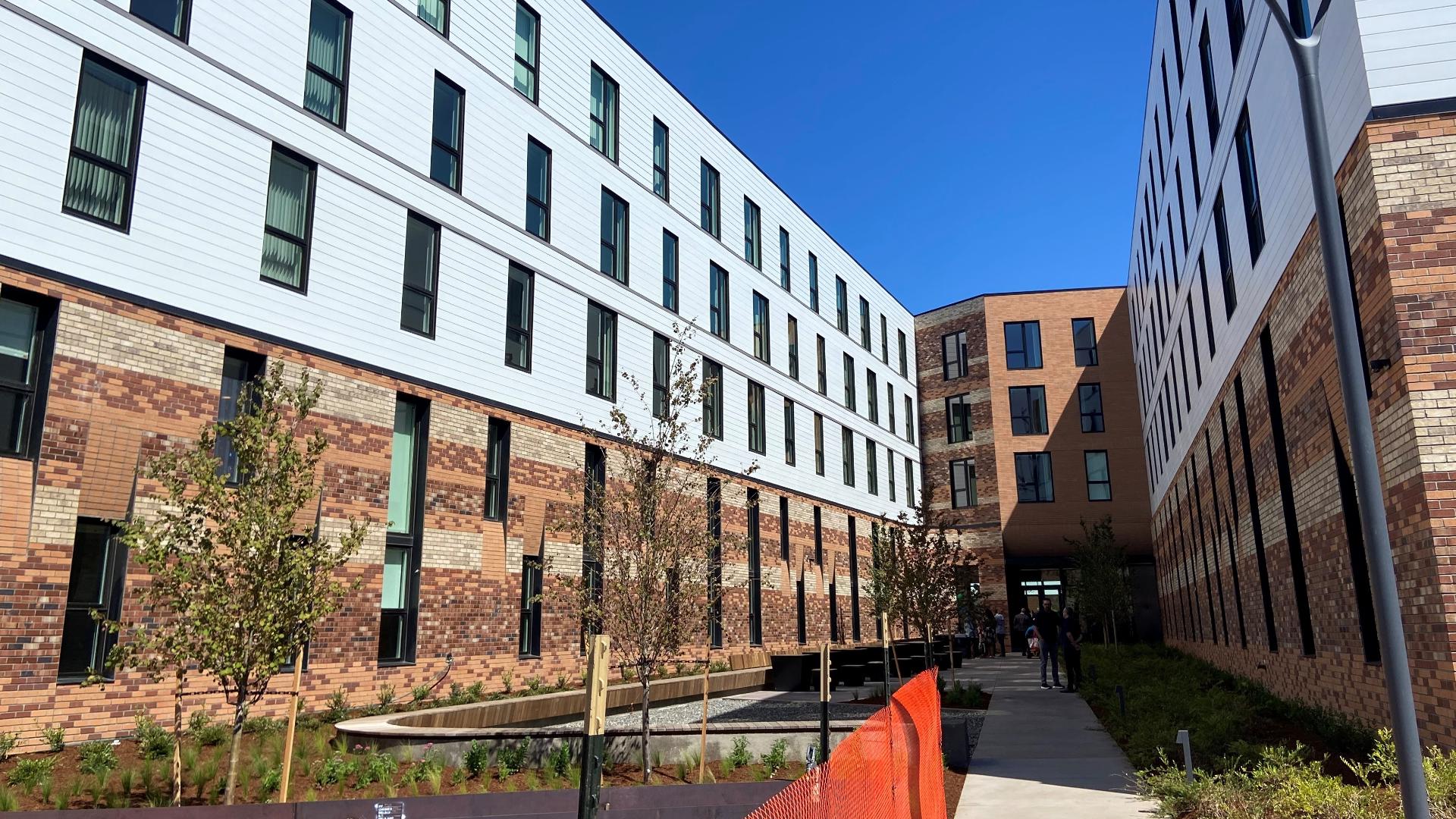Over 200 affordable homes replace former strip club in Southeast Portland

The Largest Affordable Housing Project in Portland
The old Safari Showclub has been transformed into the largest affordable housing project in Portland, thanks to the use of funds from the Portland Housing Bond.
Project Overview
The Hazel Ying Lee Apartments, located at 3000 Southeast Powell Boulevard, offers 206 units of affordable housing and has a total cost of approximately $87 million. This project is a result of the Portland Housing Bond initiative, which aims to create more affordable housing options in the city.
Funding and Affordability
The development of the Hazel Ying Lee Apartments was made possible through the collaboration of Home Forward, Multnomah County’s designated Housing Authority. The project received around $33 million from the Portland Housing Bonds. The apartments will provide different levels of affordability based on household income.
Out of the 206 units, 156 are designated for individuals or families earning up to 30% or 60% of the area median income. This translates to an annual income range of nearly $24,800 to $49,700 for a single-person household. The rent for these units will range from $619 to $1,841, depending on the income limits and unit sizes. Most of the units are studios and two-bedroom apartments, but there are also a small number of one- and three-bedroom apartments. Some of these units will be specifically allocated for individuals transitioning out of homelessness and will have access to permanent supportive housing services.
Additionally, the remaining units at Hazel Ying Lee Apartments will offer rental assistance, ensuring that tenants pay no more than 30% of their income towards rent. This is particularly important considering that around half of Portland renters are currently considered cost-burdened, paying over 30% of their income in rent.
Addressing the Housing Crisis
The Hazel Ying Lee Apartments play a crucial role in addressing the affordable housing crisis in Portland. The median market rent in the city is approximately $1,217 for a studio and $1,900 for a two-bedroom apartment, according to Zillow. By providing affordable options well below these market rates, the project aims to alleviate the financial burden on residents.
A Symbol of Hope and Inclusivity
The building was named after Hazel Ying Lee, the first Chinese American woman to fly for the U.S. military. Born in Portland in 1912, Lee joined the Women Airforce Service Pilots (WASP) during World War II. She was one of only 1,074 pilots accepted during the two years the program was active.
Ivory Matthews, CEO of Home Forward, expressed that the Hazel Ying Lee Apartments represent more than just housing. They symbolize hope within the Creston-Kenilworth neighborhood, offering stability and a sense of belonging to families who have faced the challenges of rising rents and gentrification. These 206 new homes are a testament to the power of partnerships and a shared vision of inclusivity and support.
SDGs, Targets, and Indicators in the Article
1. Which SDGs are addressed or connected to the issues highlighted in the article?
- SDG 1: No Poverty
- SDG 11: Sustainable Cities and Communities
- SDG 17: Partnerships for the Goals
2. What specific targets under those SDGs can be identified based on the article’s content?
- Target 1.4: By 2030, ensure that all men and women, in particular, the poor and the vulnerable, have equal rights to economic resources, as well as access to basic services, ownership, and control over land and other forms of property, inheritance, natural resources, appropriate new technology, and financial services, including microfinance.
- Target 11.1: By 2030, ensure access for all to adequate, safe, and affordable housing and basic services and upgrade slums.
- Target 17.17: Encourage and promote effective public, public-private, and civil society partnerships, building on the experience and resourcing strategies of partnerships.
3. Are there any indicators mentioned or implied in the article that can be used to measure progress towards the identified targets?
- Indicator 1.4.1: Proportion of the population living in households with access to basic services.
- Indicator 11.1.1: Proportion of urban population living in slums, informal settlements, or inadequate housing.
- Indicator 17.17.1: Amount of United States dollars committed to public-private and civil society partnerships.
Table: SDGs, Targets, and Indicators
| SDGs | Targets | Indicators |
|---|---|---|
| SDG 1: No Poverty | Target 1.4: By 2030, ensure that all men and women, in particular, the poor and the vulnerable, have equal rights to economic resources, as well as access to basic services, ownership, and control over land and other forms of property, inheritance, natural resources, appropriate new technology, and financial services, including microfinance. | Indicator 1.4.1: Proportion of the population living in households with access to basic services. |
| SDG 11: Sustainable Cities and Communities | Target 11.1: By 2030, ensure access for all to adequate, safe, and affordable housing and basic services and upgrade slums. | Indicator 11.1.1: Proportion of urban population living in slums, informal settlements, or inadequate housing. |
| SDG 17: Partnerships for the Goals | Target 17.17: Encourage and promote effective public, public-private, and civil society partnerships, building on the experience and resourcing strategies of partnerships. | Indicator 17.17.1: Amount of United States dollars committed to public-private and civil society partnerships. |
Source: kgw.com








